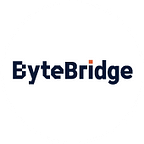Data Annotation Companies for Machine Learning in 2021
Mainly 3 types: In-house, Outsourcing, Crowdsourcing
Digital transformation has updated the global business through innovative technology. Among these, artificial intelligence (AI) has played an important role in accelerating this process and powering diverse industries such as manufacturing, medical imaging, autonomous driving, retail, insurance, and agriculture. A Deloitte survey found that in 2019, 53% of businesses adopting the AI model spent over $20 million on technology and talent acquisition.
Data Annotation
Data annotation technique is used to make the objects recognizable and understandable for machine learning models. It is critical for the development of machine learning (ML) industries such as face recognition, autonomous driving, aerial drones, robotics, and many other AI applications.
The Surging Demand for Data Labelling Services
Thirty years ago computer vision systems could hardly recognize hand-written digits. But now AI-powered machines are able to facilitate self-driving vehicles, detect malignant tumors in medical imaging, and review legal contracts. Along with advanced algorithms and powerful compute resources, labeled datasets help to fuel AI’s development.
AI depends largely on data. The unstructured raw data need to be labeled correctly so that the machine learning algorithms can understand and get trained for better performance. Given the rapid expansion of digital transformation progress, there is a surging demand for high-quality data labeling services.
According to Fractovia, the data annotation market was valued at $ 650 million in 2019 and is projected to surpass $5billion by 2026. The expected market growth leads to the increasing transition of raw unlabeled data into no bias training data by the human workforce.
AI’s New Workforce
Data labelers are described as “AI’s new workforce” or “invisible workers of the AI era”. They annotate a tremendous amount of raw datasets for AI model training. There are commonly 3 ways for AI companies to organize the data labeling service.
In-house
The AI enterprises hire part-time or full-time data labelers. As the labeling team is part of the company, the developers can have direct oversight of the whole annotation process. When the projects are quite specific, the team can adjust quickly. In general, it is more reasonable to have an in-house team for long-term AI projects as the data outputs should remain stable and consistent.
The cons of an in-house data labeling team are quite obvious. The labor cost is a huge fixed expense. Moreover, as the labeling loop contains many processes, such as building custom annotation tools, QA and QC, feedback mechanism, training a professional labeling team, etc., it takes time and effort to build infrastructures.
Outsourcing
Hiring a third-party annotation team can be another option. Professional outsourced companies have experienced annotators who finish tasks with high efficiency. Specialized labelers can proceed with a large volume of datasets within a shorter period.
However, outsourcing may lead to less control over the labeling loop and the communication cost is comparably high. A clear set of instructions is necessary for the labeling team to understand what the task is about and do the annotation work correctly. Task requirements may also change as developers optimize their models in each stage of testing.
Crowdsourcing
Crowdsourcing means sending data labeling tasks to individual labelers all at once. It breaks down large and complex projects into smaller and simpler parts for a large distributed workforce. A crowdsourcing labeling platform also implies the lowest cost. It is always the top choice when facing a tight budget constraint.
While crowdsourcing is considerably cheaper than other approaches, the biggest challenge, as we can imagine, is the accuracy level of the tasks. According to a report studying the quality of crowdsourced workers, the error rate of the task is significantly related to annotation complexity. For the basic description tasks, crowdsource workers’ error rate is around 6%, while the rate is up to 40% when it comes to sentiment analysis.
A Turning Point During COVID-19
Crowdsourcing has been proven beneficial during the COVID-19 crisis as in-house and outsourced data labelers are affected extremely due to lockdown. Meanwhile, people stuck indoors are now turning to more flexible jobs. Millions of unemployed or part-time workers are starting the crowdsourcing labeling work.
End
Outsource your data labeling tasks to ByteBridge, you can get the high-quality ML training datasets cheaper and faster!
- Free Trial Without Credit Card: you can get your sample result in a fast turnaround, check the output, and give feedback directly to our project manager.
- 100% Human Validated
- Transparent & Standard Pricing: clear pricing is available(labor cost included)
Why not have a try?
Relevant Articles:
1 Data Labeling Service — How to Get Good Training Data for ML Project?
2 Data Labeling — How to Select a Data Labeling Company
3 Importance of High-Quality Training Data in Different AI Algorithm Stage
4 The Best Data Labeling Company in 2021
5 Data Annotation Service and Its Key Advantage — Flexibility
